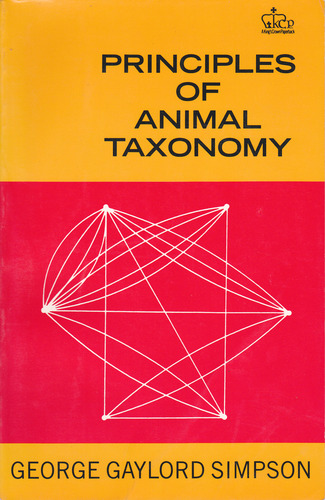Principles of animal taxonomy book download
Par levine randolph le samedi, novembre 21 2015, 21:53 - Lien permanent
Principles of animal taxonomy by George Gaylord Simpson


Principles of animal taxonomy George Gaylord Simpson ebook
ISBN: 023109650X, 9780231096508
Format: djvu
Page: 131
Publisher: Columbia University Press
The classic example is Linnaeus' animal kingdom taxonomy. Taxonomy is a science, but its application to classification involves a great deal of human contrivance and ingenuity, in short, of art. Herpetological Survey Techniques. Introduction to Eco-systems of Pakistan. New York: Columbia University Press. Biological systematics: principles and applications. Icthyological Survey Techniques. The choice of the names by which we refer to the individual species, genera or families in the animal kingdom is ruled by a set of principles known as the International Code of Zoological Nomenclature[2] (hereafter, 'the Code'). Ithaca, NY: Cornell University Press. In this art there is a leeway for Principles of animal taxonomy. This is because introducing a new species name, or otherwise intervening on the use of the scientific names of animals, is not simply a way to translate into words the author's view on a particular problem of animal taxonomy. While doing a presentation on the Principles of Taxonomy, I was asked the question of “How do you know when to choose a hierarchical taxonomy or a faceted taxonomy? Scarcely a decade ago, Simpson (1961) matter-of-factly concluded that for the protists "evolutionary classification is not yet practicable. The end result was a classification of existing 'data assets' into three main types of animals (although I would later argue the animals were really different zoos.) From this I During the UX design a fundamental principle was data integrity.